#the lehmann legacy
Text




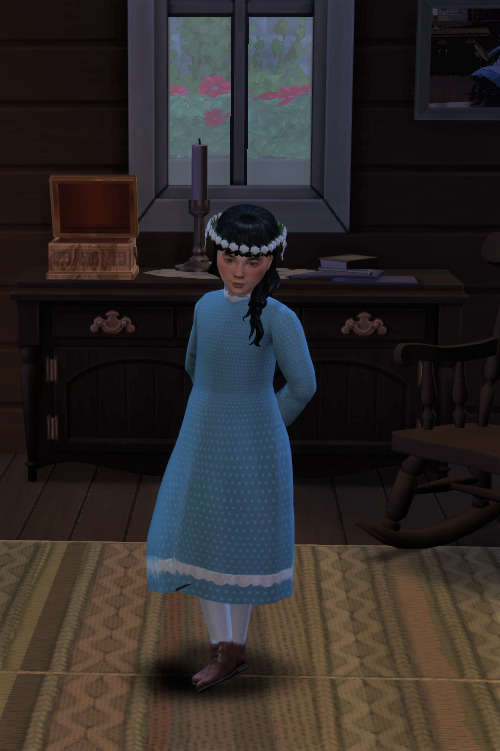
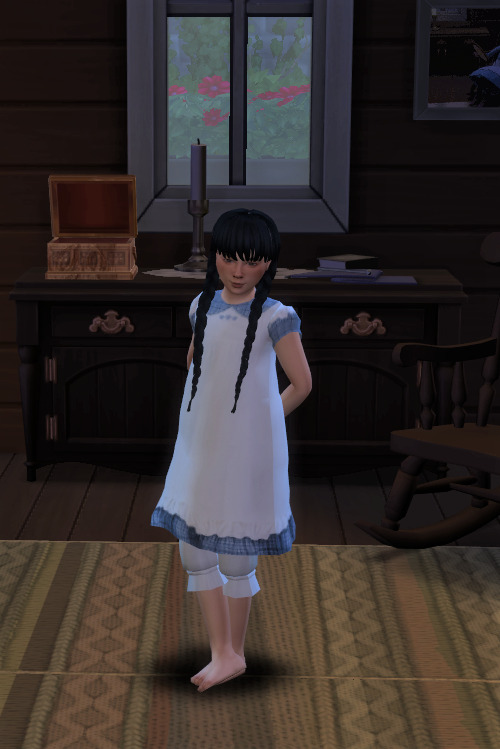

Lookbook: Johanna Lehmann

Johanna is the oldest daughter of Peter and Adelheid Lehmann. As of 1887 she is six years old. Her clothing reflects her family’s status as better off working people- pieces of Peter’s furniture can be found in fashionable saloons of Europe, though the family only sees a portion of that money, and so Johanna has some nice clothes, but nothing too impractical. She still has to help with the chickens after all!
cc links
all: stockings, boots (get to work)
Everyday: pinafore
Sundaywear: hat, dress, lace gloves
Workclothes: hat, dress
Nightwear: nightgown
Party: flowers, dress
Swimming: outfit
Hot weather: hat, dress
Cold weather: hat, coat, scarf, gloves
#ts4 historical#ts4 decades challenge#the sims 4 decades challenge#ts4 lookbook#the lehmann legacy#johanna lehmann#(Her sundays dress is not the right type of folk dress regionally but psst)
141 notes
·
View notes
Text

Tim Rollins and Kids of Survival., BY ANY MEANS NECESSARY – TRAPPED/CAUGHT, 1985-1987 (COURTESY STUDIO K.O.S., LEHMANN MAUPIN. PHOTO: MATTHEW HERRMANN)
Tim Rollins was a teacher in the South Bronx who had his students read classic literature and create art based on it.
51 notes
·
View notes
Text
Heathers, a 1989 American teen black comedy film written by Daniel Waters and directed by Michael Lehmann, is a cult classic that has stood the test of time. Its dark humor, witty dialogue, and satirical take on high school culture have made it the ultimate 80's movie.

Set in the fictional Westerburg High School, Heathers follows the story of Veronica Sawyer (Winona Ryder), a smart and popular teenager who becomes disillusioned with her clique of friends, all named Heather. The Heathers are the most popular girls in school, but they are also cruel and manipulative, using their status to bully and humiliate their peers. When Veronica meets the rebellious and mysterious JD (Christian Slater), she is drawn into a twisted plot to take down the Heathers and expose the toxic culture of her high school.

One of the reasons why Heathers is the ultimate 80's movie is its depiction of teenage angst and rebellion. The film captures the disillusionment and frustration of a generation of young people who were grappling with issues such as social inequality, consumerism, and the fear of nuclear war. Heathers presents a dark and cynical view of high school culture, where popularity and conformity are valued above all else, and where individuality and nonconformity are punished.
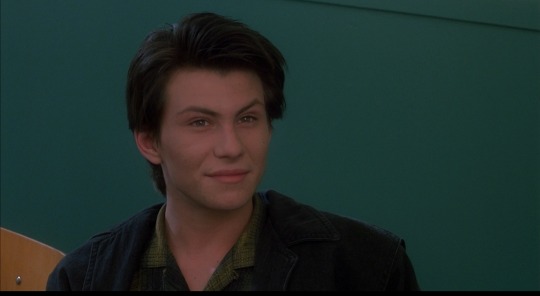
The movie's sharp and witty dialogue is another reason why it has become a cult classic. Daniel Waters' script is full of memorable lines and clever one-liners that have become part of the movie's cultural legacy. Lines like "What's your damage?" and "I love my dead gay son" have become iconic and are still quoted by fans today. The movie's dark humor and satire are also evident in its portrayal of the Heathers, who are depicted as shallow and cruel social climbers who are more concerned with their status than with the feelings of others.

Heathers also has a strong visual style that is quintessentially 80's. The movie's costume design, hair and makeup, and set design all reflect the fashion and aesthetics of the era. The Heathers' signature outfits, with their shoulder pads and bright colors, have become iconic and are still referenced in popular culture today. The film's use of color, particularly its use of red, is also notable and adds to its overall visual impact.

Finally, Heathers is the ultimate 80's movie because it has become a cultural touchstone that continues to resonate with audiences today. The movie's themes of teenage rebellion, nonconformity, and the struggle for individuality are still relevant today.
2 notes
·
View notes
Text


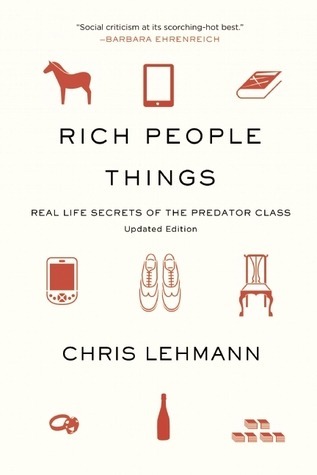


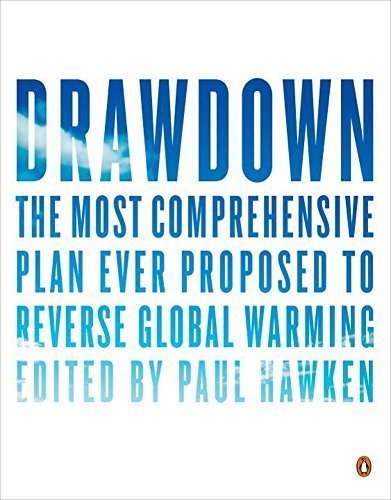
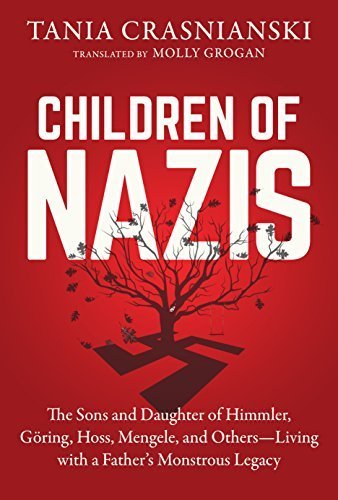


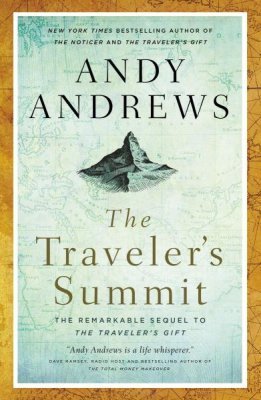

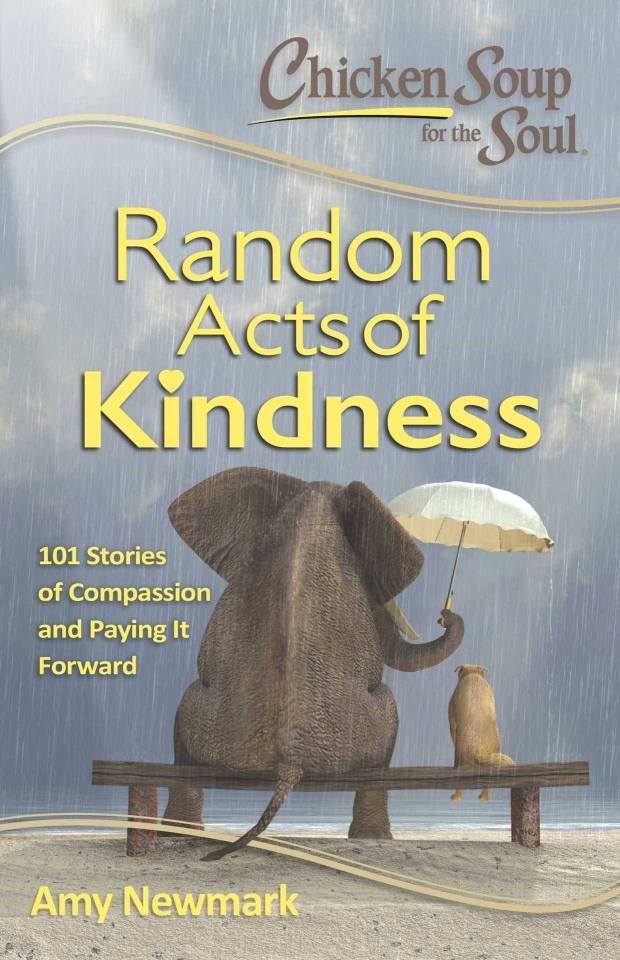



Renato Jones: The One% Season One by Kaare Kyle Andrews
The Spirit Level: Why Greater Equality Makes Societies Stronger by Richard Wilkinson and Kate Pickett
Rich People Things: Real Life Secrets of the Predator Class by Chris Lehmann
Unselfie: Why Empathetic Kids Succeed in Our All-About-Me World by Michele Borba, Ed.D.
Breaking Out of the "Man Box": The Next Generation of Manhood by Tony Porter
Drawdown: The Most Comprehensive Plan Ever Proposed to Reverse Global Warming edited by Paul Hawken
Children of Nazis: The Sons and Daughter of Himmler, Goring, Hoss, Mengele, and Others- Living with a Father's Monstrous Legacy by Tania Crasnianski
Soldiers of Peace: How to Wield the Weapon of Nonviolence with Maximum Force by Paul K. Chappell
The Apocalypse of Elena Mendoza by Shaun David Hutchinson
The Traveler's Summit by Andy Andrews
The Brighter Side of Human Nature: Altruism and Empathy in Everyday Life by Alfie Kohn
Chicken Soup for the Soul: Random Acts of Kindness by Amy Newmark
The Business Plan For Peace: Building a World Without War by Dr. Scilla Elworthy
The Will To Resist: Soldiers Who Refuse to Fight in Iraq and Afghanistan by Dahr Jamail
The End of Policing by Alex S. Vitale
0 notes
Text
As I have announced on my main simblr @simming-in-the-rain I will be posting the Lehmanns over there from now on.
22 notes
·
View notes
Photo



German Soprano Elizabeth Schumann. She was born on this day, 13th June, 1888 in Hamburg. She sang Lieder, Oratorio, Opera and Operetta and left a substantial legacy of recordings. She trained for a singing career in Berlin and Dresden and made her stage debut in Hamburg in 1909. She remained with the Hamburg Opera until 1919 also singing during the 1914/15 season at the Metropolitan Opera in New York.
From 1919 to 1938 she was a star of the Vienna State Opera. Her most famous role was that of Sophie in Richard Strauss’s “Der Rosenkavalier”. In 1938 she emigrated to New York City where she lived until her death on 23rd April 1952. During World War II she gave recitals but mainly taught singing, both privately and at the Curtis Institute of Music in Philadelphia.
After the war she gave many recitals in Europe, making a particularly successful comeback in England.
She was a much-loved artist, admired for her vivacity, elegance, and beauty. She was closely connected with Richard Strauss (with whom she is photographed in picture 2) and other leading musicians of the early 20th Century, including Otto Klemperer, Lotte Lehmann, Bruno Walter and Wilhelm Furtwangler. She was an Honorary Member of the Vienna State Opera and the first female Honorary Member of the Vienna Philharmonic.
In a career spanning 28 years she sang a total of 91 roles. Her debut role was that of the Shepherd Boy in Wagner’s “Tannhauser” on 2nd September 1909 in Hamburg; her last role was that of the First Flower Maiden in Wagner’s last completed opera, “Parsifal” on 1st November 1937 in Vienna.
5 notes
·
View notes
Link
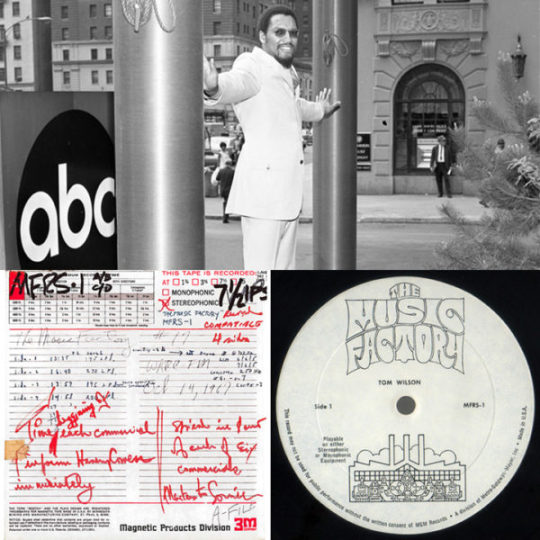
The series has been long gone from radio, but I began airing episodes on my WFMU radio program in Summer 2016, and aired the entire Wilson series on a bi-weekly basis. Wilson is a genial host, a charming broadcaster with a warm presence. His humor is self-deprecating, and he always puts his guests at ease with his robust (sometimes too robust) laughter. The episodes are interesting time capsules from a period when superior audio fidelity was helping FM radio harvest music seekers from static-plagued AM. Despite the dominance of rock, psychedelia, and folk-rock, Wilson offers a bit of genre-surfing in Music Factorycontent, occasionally mixing in R&B, jazz, Latin, and the token classical number. He throws down hippie parlance (“groovy”—a lot) with the conviction of a trendspotter with a master plan, and insists on pronouncing terpsichore as TERP-si-kor. He had Teddy Reig on the program, though probably none of his listeners had a clue about Teddy’s legacy. Thank you, Tom Wilson. And yes, he hosted Lou and John from the Velvet Underground (whose first two albums were produced by Wilson). The VU interview is underwhelming.
Most episodes were transferred from rare vinyl discs provided by Byron Coley, with the rest provided as digital files by Harry Weinger at Universal. Thanks to both gents. I have digitally restored the transfers (often a quixotic endeavor—these were not high-quality pressings), and in many cases replaced music tracks with upgraded audio. The episodes contain commercials for then-new MGM-Verve releases. They are the same commercials, episode after episode, and they become maddening in their repetition. You will be endlessly reminded that “Nico is beautiful,” that “Women hate war,” and that buying a Tim Hardin album “is like owning a work of art.” One of the recurring commercial announcers is Scott Muni, a longtime figure in New York rock radio. Muni had been a Top 40 anchor at WABC-AM until 1965, then gradually transitioned over to FM, eventually finding a home at WNEW-FM in 1967.
You can stream or download each episode below as mp3 audio. The opening and closing theme is “Help, I’m A Rock” by the Mothers of Invention from the 1966 album Freak Out!, produced by Wilson. I do not own the rights to any of this music, nor to the programs themselves, and these programs are NOT FOR SALE.
Program #01 — Tom Wilson
Program #02 — Odetta
Program #03 — The Velvet Underground (Lou Reed & John Cale)
Program #04 — Every Mother’s Son
Program #05 — The Cowsills
Program #06 — Paul Williams (editor, Crawdaddy Magazine)
Program #07 — Tim Buckley
Program #08 — Sam the Sham
Program #09 — Artie Ripp (producer/hustler)
Program #10 — Teddy Reig (producer/legendary character)
Program #11 — Richie Havens
Program #12 — Janis Ian
Program #13 — The Lovin’ Spoonful (Jerry Yester and Joe Butler)
Program #14 — Ultimate Spinach (Ian Bruce-Douglas and producer Alan Lorber)
Program #15 — Orpheus (Bruce Arnold and producer Alan Lorber)
Program #16 — The Appletree Theater (John Boylan)
Program #17 — Beacon Street Union (producer Wes Farrell)
Program #18 — Dave Van Ronk
Program #19 — Sandy Posey
Program #20 — Bobby Callender
Program #21 — Harumi
Program #22 — Mike Jeffery and Mark Joseph (Tom Wilson absent)
Program #23 — Recording engineers: Gary Kellgren, Phil Ramone, Sandy Lehmann-Haupt
Program #24 — Bret Morrison (voice of radio’s “The Shadow”)
Program #25 — William “Rosko” Mercer (popular New York radio voice in the late 1960s)
Program #26 — Paul Shalmy, editor of Eye Magazine (article about WFMU from Eye, Nov. 1969)
In 1968 Wilson left the show, and comedians Bob & Ray were hired to host the series, which moved to WNEW-FM in September of that year.
2 notes
·
View notes
Photo

Maria Olszewska (Olczewska, also Marie Berchtenbreitner; 12 August 1892 – 17 May 1969) The German contralto, Maria Olszewska, studied with Karl Erler in Munich and began her career as a concert singer. Subsequently, she was heard by conductor Artur Nikisch who felt that her voice was of operatic calibre and should be presented on stage.Through his recommendation, Maria Olszewska made her debut in Krefeld in a 1917 production of Tannhäuser singing the role of a page. By 1920, she had advanced to Leipzig where her roles encompassed the larger Wagnerian mezzo parts, such as Brangäne, Fricka, and Waltraute. In Hamburg, she participated in the premiere of Erich Korngold's Die Tote Stadt, presented jointly with Cologne. The Vienna Opera engaged her in 1925 and she began to ingratiate herself with the demanding public there. Making her Covent Garden debut in 1924, Maria Olszewska offered a Herodias described as "outstanding" as were her Waltraute, Brangäne, and Fricka. In May 1925, her collaboration with Lotte Lehmann in Lohengrin caused Ernest Newman to write that the pair "showed us what a masterpiece the second act of the opera really is." In the spring of 1927, her Carmen, like those of many other singers, failed, especially when measured against Marcel Journet's elegant Escamillo. When Bruno Walter conducted Die Fledermaus in the 1930-1931 season, Olszewska was the "strutting" Orlofsky. She finally was able to present her Octavian to London audiences that same year, aristocratic as the young lover, but relishing a bit of vulgarity when disguised as the wench. She remained at Covent Garden through 1933.Maria Olszewska sang with the Chicago Opera from 1928 to 1932. There, she opened the company's last season at the venerable Auditorium with her Carmen and sang Fricka with a cast that included Frida Leider's Brünnhilde, Eva Turner's Sieglinde, and Alexander Kipnis' bass-voiced Wotan. Other roles she essayed in Chicago included Octavian, Brangäne, Ortrud, Magdalene, Katinka (in Smetana's Bartered Bride), the Third Lady, and the title role in Massenet's Hérodiade.Maria Olszewska's Metropolitan Opera debut on January 16, 1933, induced critic W.J. Henderson to describe her as "a Brangäne of the first rank." She was cast as Amneris in the opening night of the Metropolitan's 1934-1935 season and sang, in addition to her repertory of Wagner roles, Azucena and Clitemnestre. In the latter part, one performance was greeted with gales of applause and cheering in the midst of the opera, an unprecedented occurrence. Music writer and conductor Robert Lawrence, writing in his 1956 book, A World of Opera, described both her physical and vocal beauty, also citing a certain restlessness that occasionally impacted her stage deportment. Her best performances, he maintained, came in productions which "immobilized her," keeping her "rooted in one spot and out of mischief."Although Maria Olszewska sang frequently in recital, the very beauty of her voice and her propensity for lingering on vowel sounds kept her from achieving real success in that medium. On stage in Wagner and Strauss, however, she ranked with the finest artists of her era.A strikingly beautiful woman with a sumptuous voice, mezzo-contralto Maria Olszewska made her mark even among a substantial class of other dramatic mezzos and contraltos performing in during her prime years. The very richness of her instrument sometimes led her into capricious musical behavior, but when guided by the baton of an assertive conductor, she could be a magisterial artist. Among her legacy of recordings is the incomparable abridged Rosenkavalier captured in Vienna with Lotte Lehmann, Elisabeth Schumann, and Richard Mayr. From 1947 to 1949 Maria Olszewska was a Professor at the Wiener Musikhochschule.
2 notes
·
View notes
Text
William Grant Still
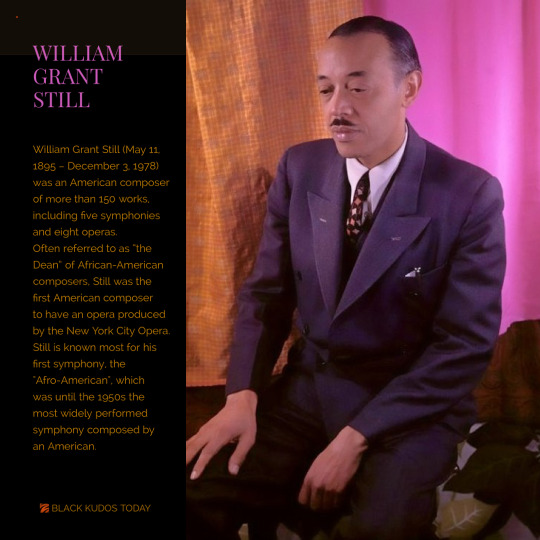
William Grant Still, Jr. (May 11, 1895 – December 3, 1978) was an American composer of nearly 200 works, including five symphonies and nine operas.
Often referred to as the "Dean of Afro-American Composers", Still was the first American composer to have an opera produced by the New York City Opera. Still is known primarily for his first symphony, Afro-American Symphony, which was until 1950 the most widely performed symphony composed by an American.
Born in Mississippi, he grew up in Little Rock, Arkansas, attended Wilberforce University and Oberlin Conservatory of Music, and was a student of George Whitefield Chadwick and later Edgard Varèse.
Of note, Still was the first African American to conduct a major American symphony orchestra, the first to have a symphony (his 1st Symphony) performed by a leading orchestra, the first to have an opera performed by a major opera company, and the first to have an opera performed on national television.
Due to his close association and collaboration with prominent African-American literary and cultural figures, Still is considered to be part of the Harlem Renaissance movement.
Life
William Grant Still, Jr. was born on May 11, 1895, in Woodville, Mississippi. He was the son of two teachers, Carrie Lena Fambro (1872–1927) and William Grant Still Sr (1871–1895). His father was a partner in a grocery store and performed as a local bandleader. William Grant Still Sr. died when his infant son was three months old.
Still's mother moved with him to Little Rock, Arkansas, where she taught high school English. She met and in 1904 married Charles B. Shepperson, who nurtured his stepson William's musical interests by taking him to operettas and buying Red Seal recordings of classical music, which the boy greatly enjoyed. The two attended a number of performances by musicians on tour. His maternal grandmother Anne Fambro sang African-American spirituals to him.
Still started violin lessons in Little Rock at the age of 15. He taught himself to play the clarinet, saxophone, oboe, double bass, cello and viola, and showed a great interest in music. At 16 years old, he graduated from M. W. Gibbs High School in Little Rock.
His mother wanted him to go to medical school, so Still pursued a Bachelor of Science degree program at Wilberforce University, a historically black college in Ohio. Still became a member of Kappa Alpha Psi fraternity. He conducted the university band, learned to play various instruments, and started to compose and to do orchestrations. He left Wilberforce without graduating.
He was awarded scholarships to the Oberlin Conservatory of Music, where he studied with Friedrick Lehmann and George Andrews. He also studied privately with the modern French composer Edgard Varèse and the American composer George Whitefield Chadwick.
On October 4, 1915, Still married Grace Bundy, whom he had met while they were both at Wilberforce. They had a son, William III, and three daughters, Gail, June, and Caroline. They separated in 1932 and divorced February 6, 1939. On February 8, 1939, he married pianist Verna Arvey, driving to Tijuana for the ceremony because interracial marriage was illegal in California. They had a daughter, Judith Anne, and a son, Duncan. Still's granddaughter is journalist Celeste Headlee by way of Judith Anne.
On December 1, 1976, his home was designated Los Angeles Historic-Cultural Monument #169. It is located at 1262 Victoria Avenue in Oxford Square, Los Angeles.
Career
In 1916 Still worked in Memphis for W.C. Handy's band. In 1918 Still joined the United States Navy to serve in World War I. After the war he went to Harlem, where he continued to work for Handy. During his time in Harlem Still was involved with other important cultural figures of the Harlem Renaissance such as Langston Hughes, Alain Locke, Arna Bontemps, and Countee Cullen, and is considered to be part of that movement.
He recorded with Fletcher Henderson's Dance Orchestra in 1921, and later played in the pit orchestra for Noble Sissle and Eubie Blake's musical, Shuffle Along and in other pit orchestras for Sophie Tucker, Artie Shaw, and Paul Whiteman. With Henderson, he joined Henry Pace's Pace Phonograph Company (Black Swan). Later in the 1920s, Still served as the arranger of Yamekraw, a "Negro Rhapsody" composed by the Harlem stride pianist James P. Johnson.
In the 1930s Still worked as an arranger of popular music, writing for Willard Robison's Deep River Hour and Paul Whiteman's Old Gold Show, both popular NBC Radio broadcasts.
Still's first major orchestral composition, Symphony No. 1 "Afro-American", was performed in 1931 by the Rochester Philharmonic, conducted by Howard Hanson. It was the first time the complete score of a work by an African American was performed by a major orchestra. By the end of World War II the piece had been performed in New York, Chicago, Los Angeles, Berlin, Paris, and London. Until 1950 the symphony was the most popular of any composed by an American. Still developed a close professional relationship with Hanson; many of Still's compositions were performed for the first time in Rochester.
In 1934 Still moved to Los Angeles. He received his first Guggenheim Fellowship and started work on the first of his eight operas, Blue Steel.
In 1936, Still conducted the Los Angeles Philharmonic Orchestra at the Hollywood Bowl; he was the first African American to conduct a major American orchestra in a performance of his own works.
Still arranged music for films. These included Pennies from Heaven (the 1936 film starring Bing Crosby and Madge Evans) and Lost Horizon (the 1937 film starring Ronald Colman, Jane Wyatt and Sam Jaffe). For Lost Horizon, he arranged the music of Dimitri Tiomkin. Still was also hired to arrange the music for the 1943 film Stormy Weather, but left the assignment because "Twentieth-Century Fox 'degraded colored people.'"
Still composed Song of a City for the 1939 World's Fair in New York City. The song played continuously during the fair by the exhibit "Democracity." According to Still's granddaughter, he couldn't attend the fair except on "Negro Day" without police protection.
In 1949 his opera Troubled Island, originally completed in 1939, about Jean-Jacques Dessalines and Haiti, was performed by the New York City Opera. It was the first opera by an American to be performed by that company and the first by an African American to be performed by a major company. Still was upset by the negative reviews it received.
In 1955 he conducted the New Orleans Philharmonic Orchestra; he was the first African American to conduct a major orchestra in the Deep South. Still's works were performed internationally by the Berlin Philharmonic Orchestra, the London Symphony Orchestra, the Tokyo Philharmonic Orchestra, and the BBC Orchestra.
In 1981 the opera A Bayou Legend was the first by an African-American composer to be performed on national television.
Still was known as the "Dean of Afro-American Composers". Still and Arvey's papers are held by the University of Arkansas.
Legacy and honors
Still received three Guggenheim Fellowships in music composition (1934, 1935, 1938) and at least one Rosenwald Fellowship.
In 1949, he received a citation for Outstanding Service to American Music from the National Association for American Composers and Conductors
In 1976, his home in Los Angeles was designated a Historic-Cultural Monument.
He was awarded honorary doctorates from Oberlin College, Wilberforce University, Howard University, Bates College, the University of Arkansas, Pepperdine University, the New England Conservatory of Music, the Peabody Conservatory in Baltimore, and the University of Southern California.
He was posthumously awarded the 1982 Mississippi Institute of Arts and Letters award for music composition for his opera A Bayou Legend.
Selected compositions
Still composed almost 200 works, including nine operas, five symphonies, four ballets, plus art songs, chamber music, and works for solo instruments. He composed more than thirty choral works. Many of his works are believed to be lost.
3 notes
·
View notes
Text

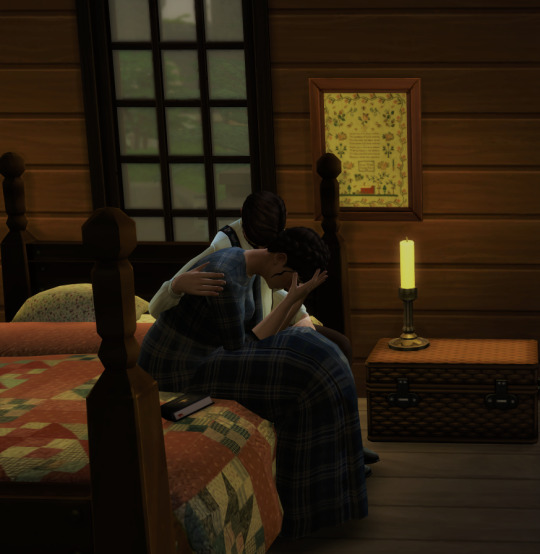
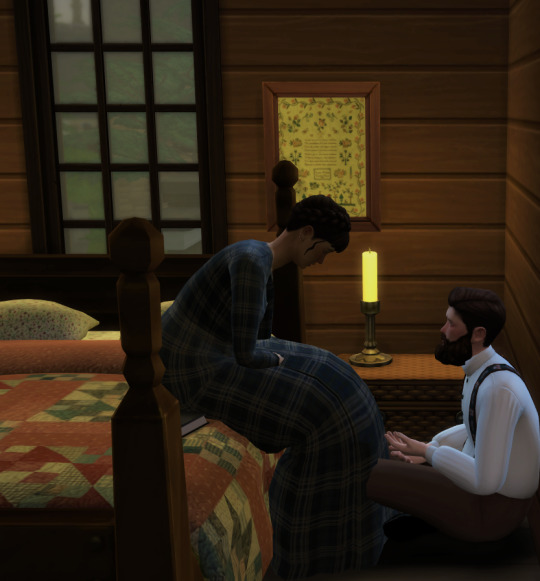

Adelheid had been up early in the morning baking bread when the contractions set in. The only thing she could think was that it was too early, and then it was over. Tobias Lehmann was born on the 7th of july, 1887, and by the next day he was gone.
They all suffered of course, even little Paul who hardly understood why, but Adelheid took the loss the hardest. Peter and the girls tried their best to give her time to grieve, but still, nothing hurt Peter more than finding her sitting on their bed in the evenings, staring blankly at the entry in their family bible, tears welling up in her eyes. But still, there were no words to ease the loss, and all he could do was hold her as she cried.
But they had to keep living, and so while Dete took over everything to do with the chickens and the goat and tended to her mother’s herb garden in the afternoon, Johanna kept house almost on her own, and Peter was quite busy doing everything the girls couldn’t and hardly entered his workshop.
It felt like years went by this way, but it could not have been more than a few months until Adelheid began to leave the house again.
#tw death#tw child loss#tw grief#the lehmann legacy#ts4 historical#ts4 decades challenge#adelheid lehmann#peter lehmann#tobias lehmann
10 notes
·
View notes
Text
By Stephanie Drawdy*
The Art Business Conference, held in New York on April 17, was an ambitious day of discussion among art professionals who shared insight on the “ecosystem” of the art market. From the impact of technology on authentication to data breaches and many points in between, the Conference, now in its second year, provided hands-on information about practical issues affecting the global art market.
The art market was likened to a marathon, not a sprint, in the Conference’s opening session that dealt with the future of collecting. The panelists vigorously debated the factors that may control the viability of collecting, which included price transparency and knowing one’s client. Tech startup Artsy was represented by Devang Thakkar who discussed his company model as an online platform for galleries, museums, and foundations, and how that model meets a core need that will increase collecting. For example, its “Augment Reality” capability allows potential collectors to project images in their home, office, etc. to see how a piece works in their space. Mr. Thakkar believes this will change how people see art.
Online auctions were also discussed as a vehicle that is increasing collecting. Dallas-based Heritage Auctions was represented by its director of American Art, Aviva Lehmann, who was formerly with Christies. Ms. Lehmann used the recent increase in the valuation of illustration art as an example of how online auctions are helping the market. She described a bidding war by two individuals who each wanted to buy the same piece by Norman Rockwell as a Mother’s Day gift. Neither bidder had a history of collecting illustration art, but the vehicle of online auction facilitated their interest in the piece and drove up the price to a multi-million dollar sale.
Art Market Economist Magnus Resch discussed implementation of new tools like block chain, the digital register that anonymously records transactions. Block chain (discussed in the recent article by Louise Carron) has the potential to impact areas of the art market like provenance by increasing the transparency of a piece’s history. Yet, because everything takes longer in the art world, according to Mr. Resch, the impact of block chain in the art market may be long in coming.
Another big topic was third party funding of art and cultural heritage claims. At the outset of her presentation, Noor Kadhim, Head of International Arbitration, Investment Planning, and Art at London’s Cubism Law, set out a wise premise: the lawyer’s job is not to give a pathway to heaven, but to prevent hell. With that, she proceeded to explain a variety of legal funding solutions that achieve the lofty public policy goal of preventing injustice, the insurance products that can be incorporated into funding, and the investment aspect of art claims. Ms. Kadhim also touched on the vital impact the Holocaust Expropriated Art Recovery Act of 2016 had to lift the procedural bar on many art/cultural heritage claims that otherwise would have been abandoned.
One panel was devoted to the creation of traveling exhibitions, and the extreme risks, challenges, and budgetary considerations involved in such a daunting task. Many within earshot (including myself) cringed when Wendy Lindstrom, Commercial Litigator with Messner Reeves, described the Gerhard Richter that was punctured while out for a traveling show. Insurance expert Anne Rappa with Huntington T. Block offered other concerning examples of art bearing the brunt of being on the road, including sheet metal sculpture insured with a policy that contained a dent exclusion; the basic take away: read the fine print.
Vastari Group’s CEO and co-founder Bernadine Bröcker Wieder suggested that institutions should create more ambitious traveling shows with the use of a business model from the outset. It was suggested that one way to raise the bar of an exhibition was to augment it with other works to build a unique theme. The Royal Academy’s 2015 exhibition of 17th century Baroque painter Rubens was cited as an example to be emulated; with its addition of works by other painters like Van Dyck and Cezanne, the Royal Academy showed how Ruben’s painterly style evolved. Interestingly, it was not expressed on the panel that the addition of other painters’ works to exhibits like the Rubens show have been frowned upon by some critics, such as Zoe Pilger with The Independent who would have preferred to see Rubens “on his own.”
The issue of data protection was a timely topic in the Conference, given the upcoming passage of the General Data Protection Regulation (GDPR) that goes into effect in the European Union on May 25, 2018. Cyber Security Director Aaron Aanenson with S-RM, an international risk consulting firm, gave an overview of the GDPR, noting that after its effective date, the GDPR will protect anyone who suffers a data breach while in the EU, regardless of citizenship. More info about GDPR can be found here.
Somewhat less concerning than data breaches, but still quite intriguing, was one panel’s discussion of the decisions that go into and the limitations that apply to protecting artists’ legacies. Christa Blatchford, the chief executive officer of the Joan Mitchell Foundation, defined the charitable purpose of her role as the stewardship of Ms. Mitchell’s legacy, not its protection. Tiffany Bell, editor at large with Artifex Press, discussed her decisions as editor of the Agnes Martin Catalogue Raisonne, at least one of which went against Martin’s express wishes; despite Martin’s desire that her early (pre-1961) works not be seen, Bell decided to include them because, in Bell’s judgment, they enhanced the understanding of Martin’s later works. And, the lesson from this panel for estates with constrained funds: the continual nature of perpetuity is, in fact, limited .. by what’s affordable.
This was the second annual Art Business Conference in New York, with the Conference having originated in London in 2012. Here’s to its return to this side of the pond next year for further discussion of the complex, interconnected network that is the art market.
About the Author: Stephanie Drawdy holds a B.A. in Studio Art and Political Science from the College of Charleston, a J.D. from New York Law School, and a Diploma in Arts Profession Law and Ethics from London’s Institute of Art and Law.
Disclaimer: Reading about art and law events is no substitute to formulating first-hand opinions about speakers and topics.
WYWH: NYC’s Art Business Conference 2018 By Stephanie Drawdy* The Art Business Conference, held in New York on April 17, was an ambitious day of discussion among art professionals who shared insight on the “ecosystem” of the art market.
2 notes
·
View notes
Photo

As David DuPpnt finishes his last Supervisor shift, we congratulate Emily Lehmann as she signs on the air to continue the Car 3 legacy. We wish her the best of luck as she and the other Field Supervisors continue to keep SUA at a gold standard of excellence in EMS!
3 notes
·
View notes
Text
History of ‘Heathers’

Figure 2. Performance picture from the Off-Broadway production of ‘Heathers,’ from ‘The Guardian,’ 2014.
In 1989, ‘Heathers’ burst onto screens, unfortunately it was not to everybody’s taste and was originally considered a box office flop.
‘Needless to say, not everybody in 1980s America saw the funny side. Heathers was not a box-office hit. “People were outraged: ‘How dare you make a comedy about teenage suicide?’ Well I didn’t make a comedy about teenage suicide,” says Lehmann (nobody in Heathers actually commits suicide). “There were plenty of people at the time who thought the humour was irresponsible, and that the choice of subject was not something that should be put up for satire and, you know, I just rolled my eyes and said the most horrific topics should be the ones that are best suited to satire.”’ (Rose, 2018).
In the absence of a regular crowd, Heathers was forced to take a back seat to other box office hits and as a result of this, the producers lost so much money that they halted future production.
‘If only more people had caught it in the cinema. Heathers made just $1.1 million back on its $3 million budget. It was the last film released by New World Pictures, which closed weeks after the film’s release.’ (Brady, 2018).
Despite its lack of success back in 1989, it was later adapted into a musical.
‘As well as capturing its time, Heathers caught something universal, then, but bringing it into the modern day has required some adjustments. Heathers: The Musical is a brighter, more optimistic proposition than the movie, with more of a female self-empowerment theme and less in the way of transgressive satire. The sexual assault incidents have been removed, fewer guns are waved around, Veronica no longer burns her hand with a cigarette in self-loathing. It hits the spot with fans, but others have likened it to “a mere Glee episode about suicide”.’ (Rose, 2018).
So in 2010, Heathers made its off-Broadway debut and it featured a few changes.
‘The movie’s pitch-black comedy has been brightened somewhat on its journey to the 21st-century stage, with the addition of musical numbers such as Freeze Your Brain (on the transformative properties of 7/11 slushies) and My Dead Gay Son (in which a double funeral becomes an anthem to inclusivity).’ (Rose, 2018).
In 2018, Heathers was revived in an off-West End production.
‘The show, which transfers to the West End in September, was raucously received. As a Heather would say, it was very.’’ (Rose, 2018).
Due to the success of the off-West End previews, Heathers finally achieved the recognition that many believed was overdue and deserved as it moved to Theatre Royal Haymarket in the West End.
‘Heathers: The Musical premiered in 2014 and will transfer to London’s West End this September.’ (Brady, 2018).
After it finished its run on the West End, it was announced that Heathers would be embarking on a UK Tour.
‘With music and lyrics by Laurence O’Keefe and Kevin Murphy, the adaption has had productions across the world including a recent West End run starring Carrie Hope Fletcher. Produced by Bill Kenwright and Paul Taylor-Mills, the musical is now embarking on its first UK tour for 2020.’ (Darvill, 2020).
There have been many productions of Heathers ranging from amateur high school shows to Riverdale and a TV series of the same name.
‘The musical is not the only recent repackaging of Heathers; there is also Heathers the TV series. Set in the present day, it is billed as “a satirical comedy that takes creative risks in dealing with many of society’s most challenging subjects, ranging from personal identity to race and socio-economic status to gun violence”. The show makes some drastic changes to the original set-up: the new Heathers of the piece are no longer all thin, privileged white girls; instead, one is a plus-sized girl, one is a black lesbian, and one is a genderqueer male (Veronica is white and blonde). Thus, the original film’s political satire is turned on its head. It was applauded by far-right commentators, which was probably not the intention.’ (Rose, 2018).
The TV show was cancelled due to a tragedy in America which clashed with its timing of release.
‘A TV reboot was scrapped by the Paramount Network last June following the Parkland shootings. In this new version, which is now expected to land with one of the streaming sites, Heather McNamara (originally played by Lisanne Falk) is now portrayed by Jasmine Mathews and is written as a black lesbian. Heather Duke (Shannen Doherty) is played by Brendan Scannell, who identifies as genderqueer and Heather Chandler (Kim Walker) is now played by Melanie Field – a plus-sized actress.’ (Brady, 2018).
The TV series may have been cancelled but Heathers lives on, it has inspired many adaptations.
‘In its absence, some of that Heathers legacy has percolated down through the generations, in teen movies such as Clueless, Mean Girls and Election, or this year’s Thoroughbreds, about two privileged white girls who coolly plot a murder.’ (Rose, 2018).
Many believed that Heathers was an inaccurate representation of High School but others worry that it is far too close to reality.
‘Now Lehmann wonders if we’re not actually living in a Heathers sequel: “I watch the American political news and I can’t believe how much it’s like high school!’ (Rose, 2018).
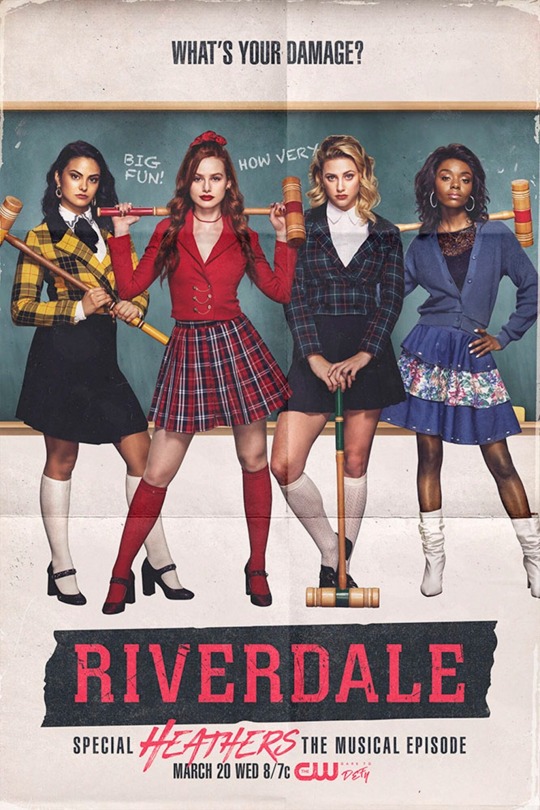
Figure 3. A poster advertising the ‘Heathers’ inspired episode of ‘Riverdale,’ from ‘Entertainment Weekly,’ 2019.
0 notes
Text

Dete was soon followed by little Paul, who, after the easiest labour Adelheid had endured yet, was born on the 5th of May, 1885, though that fact would not make it to the records, as, given the general business of harvest season, time went on and Peter continued to not find the time to get the birth recorded, and before anyone knew it it was too late, and so the baby’s birthday swiftly became the 13th May instead.
#ts4 historical#ts4 decades challenge#the lehmann legacy#peter lehmann#adelheid lehmann#johanna lehmann#Dete Lehmann#paul lehmann#Fun fact: This is indeed based on a true story#if you notice hair changes or something it is probably because I am still getting my cc back in order#Also this is our heir and I love him
21 notes
·
View notes
Text
Getting to Know Peter Stöger
For the second time this year, Borussia Dortmund have signed a new head coach, appointing former Cologne boss Peter Stöger on Sunday after letting go of Peter Bosz. To get to know Stöger better, we reached out to Effzeh.com’s Thomas Reinscheid.
Under Peter Stöger, Cologne developed continuously for four years and suddenly things went terribly wrong this season. Can you break that down into one or two reasons?
Not into one or two, sadly, no.
But if we’re talking about the main source for the problems at Cologne, then surely the club’s transfer strategy and injury issues are near the top of the list. Unfortunately, they have neglected to properly improve the squad over the last two years and they’re getting their comeuppance after a surprisingly strong last campaign.
Peter Stöger isn’t completely blameless, however: The team seems odly lethargic and not entirely fit, he stuck to players such as Matthias Lehmann and Konstantin Rausch for a long time because of a lack of options and even his magic touch in terms of his in-game coaching seems to have gone missing.
The dramatic collapse is the consequence of all this, and the team was basically relegated at the start of December.
What impression did Stöger make towards the end of his tenure? Did he still reach his players, was he tired or irritable?
From my point of view Stöger didn’t make much of a different impression than last season. He’s a very calm, down-to-earth guy who doesn’t show huge emotional swings in bad or successful periods. That style was well received by the team too: The players never hung their heads despite the disastrous run of results and they always rallied to their coach. Even though he mentioned some signs of fatigue towards the end of last season in the summer, Stöger never seemed spent or weary of his job. On the contrary: He fought for his job, his team and his legacy with FC.
Stöger mostly stands for a good defensive organisation, but has also coached a more dominant style in the 2. Bundesliga and with Austria Wien. Do you think he’ll be able to do more than consolidate Dortmund?
I think he’s capable of more, generally speaking.
Stöger has proved at Cologne that he’s able to establish a stable system on the field. The problem I see, though, is that doesn’t have a lot of time to do that. Taking over the head-coaching job for a profoundly rattled team in the middle of English Weeks [with mid-week fixtures] is a kamikaze operation — and the winter break isn’t really long enough to do fundamental work on the structural weaknesses in Dortmund’s team.
It’s going to be interesting for me to watch whether he will play a different kind of football with a much better squad. From the outsider’s view he’s considered as a clearly defensive-minded coach, but in my opinion that was largely down to Cologne’s limited squad.
Maybe he can rework his image in those six months at Dortmund …
The fans seem to have loved Stöger, can you describe his personality in a few words?
From the human side of things I can only congratulate BVB fans: Stöger is grounded and straightforward, with a lot of Wiener Schmäh [the Viennese humour and style of communication] and important social skills. He truly captivates people, in a completely different way compared to Jürgen Klopp, for example.
I’m excited to see whether he manages to get invested in his new club and approach its identity — like he did in Cologne.
Many thanks to Thomas, whom you can follow on Twitter @koelnsued
You can find his work at Effzeh.com
Lars Pollmann
1 note
·
View note
Text
How Big Bird and friends shaped children’s TV
CLOSE

On the heels of “Sesame Street”’s 50 Anniversary, the show’s loveable characters talk about their favorite celebrity guests. (Nov. 4)
AP
NEW YORK – TV’s most famous block is turning the big 5-0.
This Sunday marks half a century since “Sesame Street” aired its first episode on public television on November 10, 1969. The landmark educational children’s series introduced the world to beloved Muppet characters, including Big Bird and Oscar the Grouch, and helped pave the way for inclusion, diversity and learning onscreen.
“‘Sesame Street’ is proof that the show with top ratings or sensation-of-the-moment status is not necessarily the one that has the most lasting impact,” says TV historian Tim Brooks. “Because of its brilliant design and clearly defined audience of children in their formative years, it has probably had a greater positive impact on generations of young viewers than any show on television over the last 50 years.”
“Sesame” celebrates the milestone Saturday with “Sesame Street’s 50th Anniversary Celebration” on HBO (7 EST/PST), its home since 2015. Hosted by Joseph Gordon-Levitt, the celebrity- and music-filled event features appearances by Whoopi Goldberg, Sterling K. Brown and Patti LaBelle, as well as legendary puppeteers Caroll Spinney (the original Big Bird) and Fran Brill (the since-retired voice and performer behind Zoe and Prairie Dawn).
More: ‘Sesame Street’ tackles parental addiction crisis in a way kids can understand
For the special, which airs on PBS stations Nov. 17, it “was important to nod to our history with just the right amount of nostalgia, but recognize that we’re a current show with something modern and dynamic,” says executive producer Ben Lehmann. “The ’50th’ special is the perfect encapsulation of that.”
youtube
Honoring the past is also central to a “Sesame” episode airing later this season, which starts November 16 on HBO (9 a.m. EST/PST). Shot last winter on the series’ homey soundstage in Queens, “The Treasure of Yucky Mama” follows cuddly red monster Elmo and his fairy companion Abby Cadabby as they team up with the garbage can-dwelling Oscar, who searches fordecades-old relics belonging to his great grandma, the similarly grouchy Yucky Mama.
“Fifty? That is so old,” Elmo exclaims, letting out his signature laugh before huddling over a weathered map of Sesame Street, dated 1969. Following clues as they hunt for treasure, the furry trio visits sites of former neighborhood haunts such as the Fix-It Shop, which was replaced by the Laundromat in 2008.
“Boy, I remember how Yucky Mama used to love to come here to stare at all the busted junk in the window,” Oscar bemoans. “Now look at it: People come here to make dirty clothes clean!”

Abby Cadabby, left, Charlie (Violet Tinnirello), Nina (Suki Lopez), Oscar the Grouch and Elmo in “The Treasure of Yucky Mama.” (Photo: Courtesy of Sesame Workshop)
As the characters scurry from location to location, puppeteers glide below them on small rolling platforms just out of camera’s view: hoisting the puppets high above their heads, and trying not to bump into each other as they excitedly speak in the Muppets’ high-pitched voices.
Even when they’re not filming, the puppeteers stay in character. Abby, performed by Leslie Carrara-Rudolph, “walks” over to two young visitors between takes and greets them with hugs, cheerfully asking their names and ages. Elmo, played by Ryan Dillon since 2013, mimes lifting weights as he waits for cameras to roll, quipping, “We’re working on our core today.”
“It looks deceptively easy to do what we do, but we’re really doing half a dozen things at once,” says longtime puppeteer Matt Vogel, who plays both Big Bird and Count von Count. “We have to make that puppet look and feel real to the audience, whether they are adults or children. And that means that we are actors from the elbow up. We embody these little pieces of foam and felt with real human characteristics.”
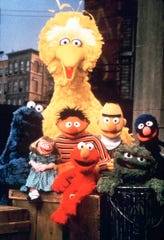
Muppets from the cast of “Sesame Street,” from left: Cookie Monster, Prairie Dawn, Big Bird, Ernie, Elmo, Bert, Oscar the Grouch and Grover, in a photo taken in 1999. (Photo: RICHARD TERMINE, CTW)
The characters’ zany personalities and lovability are part of why Vogel believes the series has endured.
“It’s this unique blend of characters, sensibility, music, humor and humanity,” Vogel says. “All of those things rolled up together in this little package – this little street, this community – is what is so important about ‘Sesame Street’ and keeps viewers connected with the show.”
The series, which moves to WarnerMedia’s HBO Max streaming service next year (episodes will continue to air later on PBS) has also broken new ground for kids’ TV. In recent years, it’s introduced human and puppet characters dealing with homelessness, foster care and autism. It furthers a mission of inclusiveness started by producers Joan Ganz Cooney and Lloyd Morrisett, who created the program with the help of Muppets visionary Jim Henson.
” ‘Sesame Street’ (premiered) in ’69, the year of both Woodstock and the moon landing, and carried on the optimism of the ’60s,” says Ron Simon, curator of television and radio at the Paley Center for Media. “It was certainly an offshoot of the civil rights movement, and brought together a multicultural cast and creative team.”
More: ‘Sesame Street’ introduces Karli, a Muppet in foster care
Sonia Manzano, who retired in 2015 after playing Fix-It Shop owner Maria for 44 years, says she rarely saw people of color on TV before the show premiered in 1969.
“At that time, when you saw a Latin person on television, you always waited for the taco joke,” Manzano says. “But not on ‘Sesame Street’: We were worried about child care and education, just like any other American family.”
“We still teach numbers and letters, but our primary focus is on the emotional and social development of the child,” Vogel adds. “The audience sees themselves in these characters, and ‘Sesame Street’ can address these really important issues.”
Autoplay
Show Thumbnails
Show Captions
Last SlideNext Slide
Read or Share this story: https://www.usatoday.com/story/entertainment/tv/2019/11/06/sesame-street-50-big-bird-childrens-tv-legacy/4168350002/
Sahred From Source link TV and Movies
from WordPress http://bit.ly/2O1TbwQ
via IFTTT
0 notes